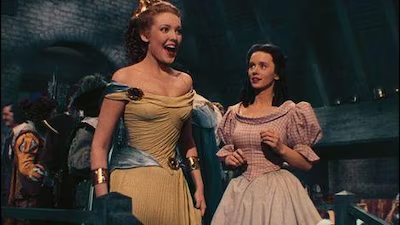Philip Dunne
About
Biography
Filmography
Family & Companions
Bibliography
Biography
Philip Dunne was one of the deans of Hollywood screenwriters from the 1930s into the 60s, scripting many a number of first-rate productions including "How Green Was My Valley" (1941), "The Ghost and Mrs. Muir" (1947) and "The Robe" (1953). Directing from 1954, Dunne turned out a series of smoothly crafted, finely acted dramas, notably "Hilda Crane" (1956), the teen angst classic "Blue Denim" (1959) and the suspense-filled "Lisa" (1962). Dunne began his writing career after taking a brief stab as a banker. His first produced credit was "Student Tour" (1934), more remembered for the sight of Betty Grable swimming in front of the Taj Mahal than for its substantive content. But that same year, Dunne adapted "The Count of Monte Cristo" for the screen, and was on his way to a prestige career. His 1936 adaptation of "The Last of the Mohicans" may not have been entirely true to the book, but it remains a classic. Dunne received his first Academy Award nomination for the true classic "How Green Was My Valley" (1941), his second for "David and Bathsheba" (1951). His "The Ghost of Mrs. Muir" adaptation sparked a franchise, and "Pinky" (1949) starred Jeanne Crain as a high-yellow African American passing for white and remains, however dated, one of the classics of the post World War II cycle of socially-conscious Hollywood films, alongside "Crossfire" and "Gentleman's Agreement." His work in the 50s and 60s as a screenwriter often went towards epics, including "The Agony and the Ecstasy" about Michelangelo, and "The Robe." In 1997, it was determined that he had written the latter with blacklisted writer Albert Maltz, who would heretofore share screen credit. Dunne was not blacklisted himself, but he was involved with so-called left-wing and liberal causes and served as a speech writer on the presidential campaigns of Adlai Stevenson and John F. Kennedy.
Filmography
Director (Feature Film)
Cast (Feature Film)
Writer (Feature Film)
Producer (Feature Film)
Music (Feature Film)
Life Events
1934
Feature screenwriting debut (with Ralph Spence), "Student Tour"
1936
Had first major success, "The Last of the Mohicans"
1941
Wrote classic "How Green Was My Valley"
1943
Served as Chief of Production for the Office of War Information, Overseas Branch, supervising films by directors including Jean Renoir, Garson Kanin, Josef von Sternberg and Willard Van Dyke
1951
Earned second Academy Award nomination for "David and Bathsheba"
1952
Worked as speech writer for Adlai Stevenson (and again during 1956 campaign)
1952
First film as producer, "Way of a Gaucho"
1954
Feature film directing debut, "Prince of Players"
1960
Worked as speech writer for John F Kennedy during presidential campaign
1966
Wrote and directed final film, "Blindfold"
1997
Posthumous credit for co-writing "The Robe" (1953) given to Albert Maltz
Videos
Movie Clip












Trailer






Family
Companions












